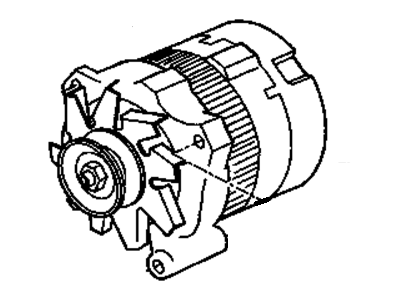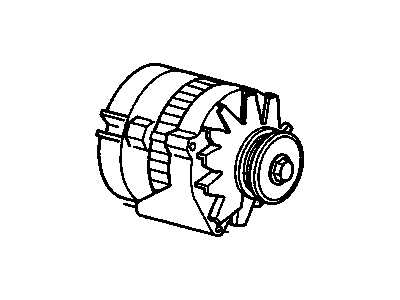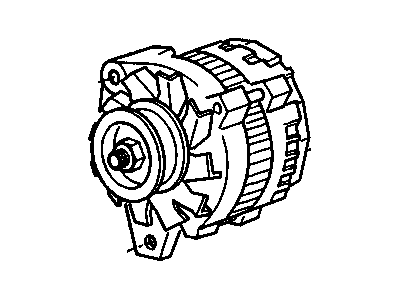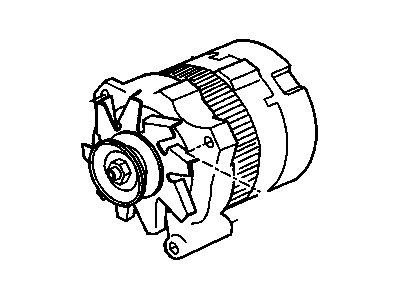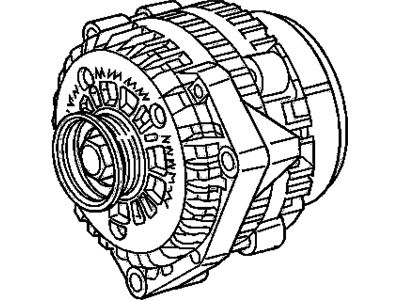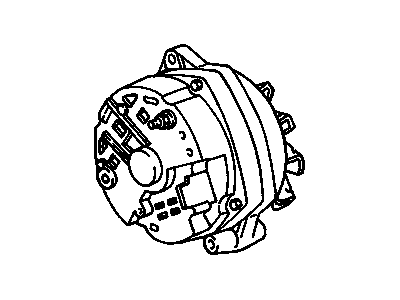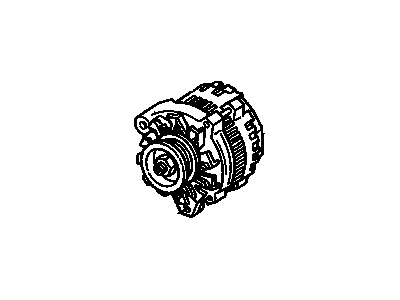
My Garage
My Account
Cart
Genuine Chevrolet Beretta Alternator
Generator- Select Vehicle by Model
- Select Vehicle by VIN
Select Vehicle by Model
orMake
Model
Year
Select Vehicle by VIN
For the most accurate results, select vehicle by your VIN (Vehicle Identification Number).
13 Alternators found
Chevrolet Beretta GENERATOR Assembly (Remanufacture)
Part Number: 10456312$8.02 MSRP: $173.69You Save: $165.67 (96%)Ships in 1-2 Business Days
Chevrolet Beretta Alternator
The Alternator in Chevrolet Beretta vehicles plays an important role in the automobile since it is a permanent charger of the car's battery besides supplying power to electrical devices when the automobile is in motion. It is usually positioned in front of the engine and its function is to take mechanical energy from the engine, transform it into electrical energy and after that supply it to the corresponding parts of the car, such as the battery. The Alternator operates through making stator stationary while the armature rotates with the help of magnetic field to produce AC and this is rectified to DC in order to charge the battery and power the electrical system of vehicles. The voltage from the Alternator is then controlled to avoid deep undercharging or overcharging and different models use the Voltage Control in the PCM. If, however, the electrical load requires it or if the stock Alternator cannot handle the electrical load, then it is recommended to upgrade to a high-output Alternator to avoid damaging the charging system.
Each OEM Chevrolet Beretta Alternator we offer is competitively priced and comes with the assurance of the manufacturer's warranty for the part. Furthermore, we guarantee the speedy delivery of your orders right to your doorstep. Our hassle-free return policy is also in place for your peace of mind.
Chevrolet Beretta Alternator Parts Questions & Experts Answers
- Q: What Are the Initial Checks and Troubleshooting Steps for a Charging Circuit Malfunction and Alternator on Chevrolet Beretta?A:If a malfunction occurs in the charging circuit, don't automatically assume the alternator is causing the problem. First check the following items: Check the drivebelt tension and condition. Replace it if it's worn or deteriorated. Make sure the alternator mounting and adjustment bolts are tight. Inspect the alternator wiring harness and the connectors at the alternator. They must be in good condition and tight. Check the fusible link (if equipped) located between the starter solenoid and alternator. If it's burned, determine the cause, repair the circuit and replace the link. Sometimes a fusible link may look good, but still be bad. If in doubt, remove it and check it for continuity. Start the engine and check the alternator for abnormal noises. Check the specific gravity of the battery electrolyte. If it's low, charge the battery. Make sure the battery is fully charged. Disconnect the Battery Cables. Inspect the battery posts and the cable clamps for corrosion. Clean them thoroughly if necessary. Reconnect the cable to the positive terminal. With the key off, connect a test light between the negative battery post and the disconnected negative cable clamp. If the test light doesn't come on, reattach the clamp. If the test light comes on, there's a short in the electrical system of the vehicle. The short must be repaired before the charging system can be checked. Disconnect the alternator wiring harness. If the light goes out, the alternator is bad. If the light stays on, pull each fuse until the light goes out. Using a voltmeter, check the battery voltage with the engine off. It should be approximately 12-volts. Further testing of this type of alternator must be done by a service station, dealer service department or auto electric shop. If the voltmeter indicates low battery voltage, the alternator is faulty and should be replaced with a new one or there is an open circuit between the alternator and the battery. If the voltage reading is 15-volts or higher and a no charge condition exists, the regulator or field circuit is the problem. Remove the alternator and have it checked by a service station, dealer service department or auto electric shop.
